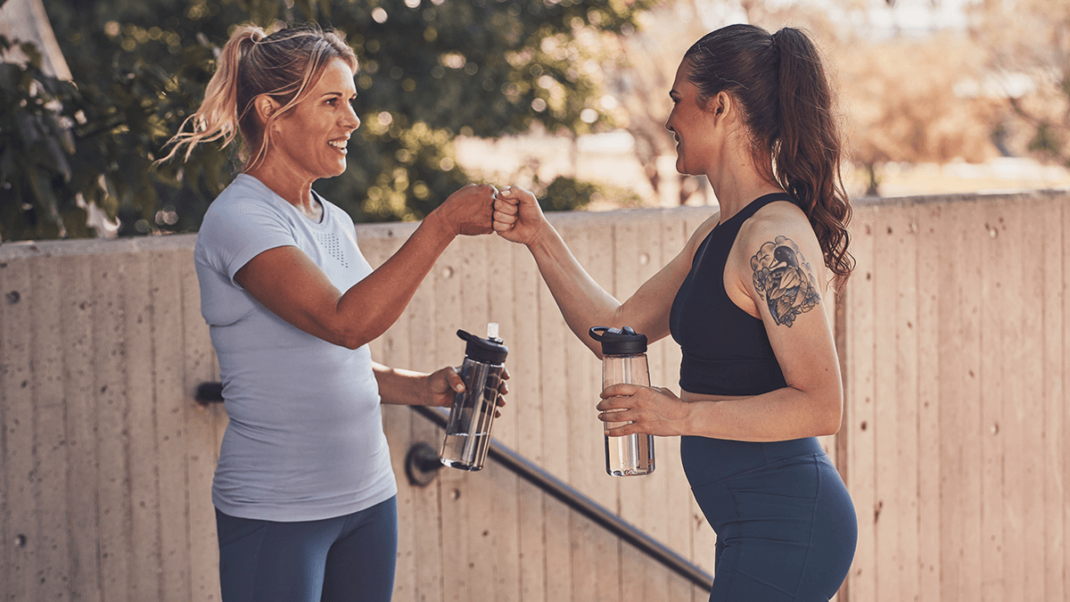write right
Discover how to create cover letters that get action.
All fitness professionals need to write a cover letter or short document at some point. Your abilities as a trainer, teacher or manager are judged by your written words. But are your cover letters making the best possible impression? Do you know how to fashion a document to get the response you want from your readers? Are you as confident with your writing as you are with your fitness skills? If not, take heart! This article provides tips for increasing the effectiveness and readability of your written communication.
The following suggestions will start you on the path to writing effectively through an approach that is “reader/results oriented.” Learn to identify and manipulate the one element all documents need to succeed. Discover how to organize material for maximum effect. With a few insights and quick organizational tips, you can create documents that get read, elicit a positive response and represent you on paper as a credible fitness professional!
Put Yourself in the Reader’s Position
To achieve these goals and become a powerful writer, first think of yourself as a reader. When you open a document or pick up a letter, what sections do you almost always read? Is there a section you often skip? If
you are like most readers, you usually or always read the beginning. You sometimes or often read the end. And you rarely or seldom read the middle unless . . . unless you know what the writer wants from you. Unless you see direct relevance to you. Unless you clearly understand why you should invest your time and energy to read further.
Write Knowing Where People Read
So the first hot tip is to put your most important elements where readers actually read—at the beginning. Avoid the common mistake of burying your important details in the middle, which readers rarely read. The second hot tip is that the single most important element in every professional document (especially cover letters) is the purpose statement. You may also have heard this element called an “objective statement.”
Early and directly, tell your readers why you are writing. “Please consider me for the position of fitness manager” or “Once you have reviewed my attached price sheet and credentials, call to set up your training sessions.” Can you pick out the purpose statement for this article? It appears early and tells you exactly why the article is being written. It also tells you what is in it for you, the reader, if you do read the article. Look for more on this concept in the middle of this article.
Make sure you also put the bottom line of your message on top. Can you
recall feeling skeptical when you did not know what a writer wanted from you? Keep those “reader perceptions” in mind when writing. Readers want to know what’s in it for them and what you want from them before they care about details, facts, supporting data, history, narrative, background or other “backup” information.
Help Your Reader Help You
Next, realize that every document you write is asking something from your reader. Maybe you’re asking for an action, a response, money or simply time (i.e., “Read and focus on my letter”). When asking for something, offer something. Offer clear explanations of why you are writing and what you want from your reader. Offer to eliminate disorganized, long-winded writing. Hot tip number three is help your reader help you. Make it easy for your reader to comply, and give your reader an incentive to comply.
To get such positive action, again adopt the reader’s perspective. With every sentence you write, pretend you are the reader. Ask yourself, “So what?” “Why should I care?” “What’s in it for me?” Bouncing these questions against your own sentences will help you eliminate unneeded verbiage and reword for a more reader-oriented approach.
Count on Your Reader
What’s a practical way to make your writing more reader oriented? When writing or rewriting, count up the number of sentences that start with the words I, me, my, mine. Do the same for sentences that begin with you, your, yours. If you are like most writers, the “I” sentences far outnumber the “you” sentences. Take that as a tip-off that you are in the writer’s perspective. Revise your letter, looking for opportunities to trade “I” statements for the “you” perspective. Combine the reader questions (“So what?” “What’s in it for my reader?” “Why should my reader care?”) with sentences starting with you and you will be a long way toward writing more effective cover letters. (See “Shift to the Reader’s Perspective,” left.)
End With Action
Do you recall the second-most-often-read section that you and your future readers actually read? Admit it! You have often skipped the middle and headed to the end of documents. Use that awareness to continue helping your reader help you. Put your second most important element—action items—at the end. What immediate actions do you want your reader to take in response to reading your document? Here are some examples: “Please call to set up an interview time,” “Thank you for passing my attached resumé to human resources once you have read it” and “You can look forward to hearing from me in a week to set a convenient meeting time.” Note that I did not write, “I will call you soon” or “I hope my references give you a good idea of why I am perfect for this job.”
You really can represent yourself on paper as well as you do in person by employing these few writing tools. Always
include a clear, direct, succinct purpose statement early in your document. Question every sentence from the reader’s perspective. Track the number of “I/writer” words and convert them to “you/reader” words when feasible. Lastly, to get action, end with action items. Ready? Then fire up your computer or pick up a pencil so you can start with purpose and end with action.
Writing a document or resumé from the reader’s perspective will enhance the likelihood that the reader will read—and care about—your words. How can you shift from “writer-oriented” to “reader-oriented” sentences? Let’s look at some common writer-oriented sentences in cover letters accompanying resumés:
- “I have more than 20 years’ fitness experience.”
- “I feel I am really perfect for the listed position and would love to be hired.”
- “I am familiar with your club, having formerly been a member.”
- “I am ready to make a career change and enjoy working with people and challenging myself.”
Notice that these common, real-life sentences are all “I” or “me” oriented?
Let’s assume that the reader of the above sentences is a manager with authority to set up interviews and hire fitness professionals. Why should such a reader care that you were once a member at that facility? Does that former membership give you insights into the members’ needs? A fuller understanding of the club’s strengths? A sense of what makes that facility unique and superior?
So what if you are ready to make a career change. Why should the reader care? Does that readiness make you motivated? Passionate about the organization?
Okay, so you want to challenge yourself. What’s in it for the reader? Are you willing to tackle tough tasks? Work long or unusual hours? Learn new information above and beyond? Now you are talking the reader’s language!
Reader-oriented revisions are much more powerful and take the following form:
- “Your clients will gain from the knowledge and contacts I have built up over 20 years.”
- “If you are looking for someone who brings enthusiasm, joy and dedication to the position, look no further!”
- “Just as I like to challenge myself, I will challenge your members—to reach their goals, to commit to health and fitness.”
Aren’t you ready to hire you now?! The first set of sentences was all about you, the writer—what you want, what you care about. The revisions kept in mind the reader’s goals—the benefits that your experience, skills and wants bring to the reader.
Note: For a companion article on writing resumés, refer to “Crafting Fitness Resumés” by Diane Y. Chapman in the September issue of IDEA Fitness Journal. Combining the resumé writing suggestions from that article with thetips in this one will enable you to put together a reader-friendly, powerful package designed to get you a job interview!
Kymberly Williams-Evans, MA
Kymberly Williams-Evans, PhD (ABD) has been a fitness professional on four continents, in four languages, for four decades on land, at sea and across the airwaves. After years of co-hosting an online radio program (Active Aging for BoomChickaBoomers), she reports having interviewed scads of great guests and two really bad ones.





